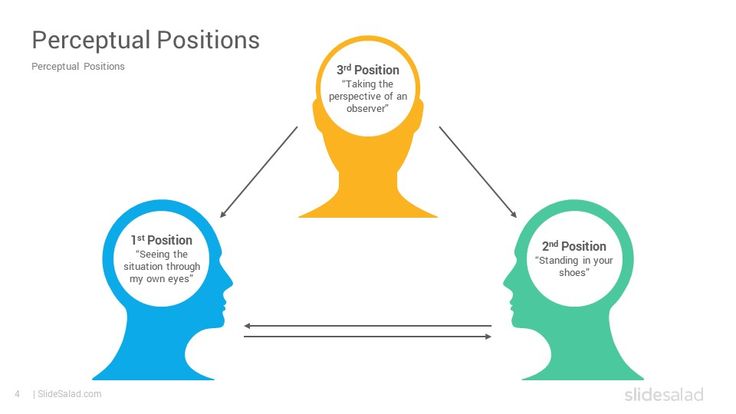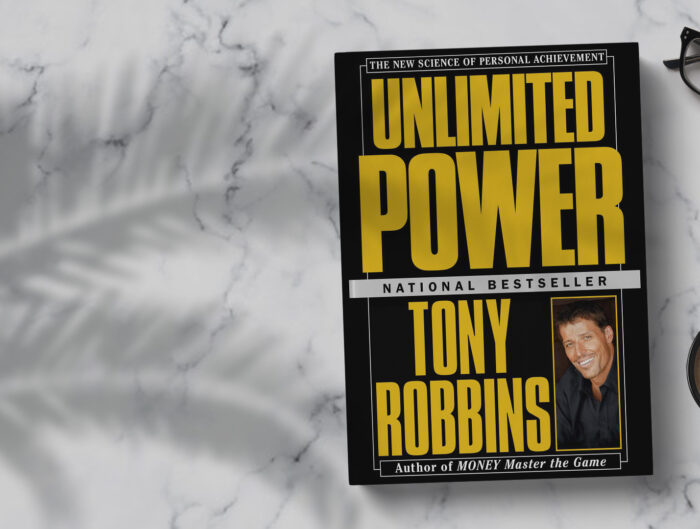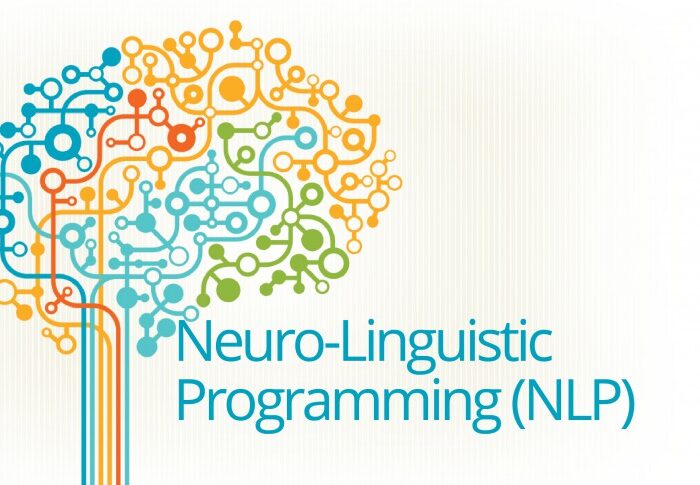It is time to go into the details of the concept of rapport (harmony) that I mentioned in my article titled “The 4 Pillars of NLP”.
Building rapport is a phenomenon that appears in every moment of our lives and constitutes one of the fundamental pillars of NLP (Neuro Linguistic Programming).
We experience rapport in two ways in life.
The first is what we call “inner rapport,” the state of our mind and body being in harmony.
The second is the rapport we experience in our communication with people.
In this article, I will talk about both types of rapport and explain how to use the concept of rapport most effectively to establish better quality communication with ourselves and others.
If you’re ready, let’s begin!

Inner Rapport:
First, I want to start with inner rapport because I believe it is essential for building rapport with others.
Inner rapport primarily requires knowing yourself and being clear about yourself.
Never forget: “Clarity is Power!”
This is because our brain senses danger in situations of uncertainty and tries to protect us by pulling us back to our safe/comfort zone.
Therefore, we must know everything about ourselves and be clear about what we want.
You might ask, “What do you mean by this?”
Let me explain…
Being in harmony with ourselves, that is, achieving inner rapport, means having our mind and body in harmony, as I mentioned at the beginning of the article.
It is very difficult to take action with a tired physical posture, isn’t it?
Or saying “I really want to do this” with an unenthusiastic tone of voice is actually clearly saying that we don’t want to do it.
Or, if we use phrases like “I am a lazy person” for ourselves, it would be challenging to take action with passion.
For this reason, our body language (physical posture), tone of voice, and the words we use must be in harmony with what we want to do.
Our body language (physical posture), tone of voice, and the words we use also have a real impact on our beliefs and identities.
Inner rapport also means that our beliefs and values are in harmony with our actions to achieve what we want or dream of.
I will address the topic of beliefs and values in a separate article because it is one of the most important topics in NLP.
In this article, I want to explain the situation with some examples to help you understand it better.
Have you ever asked yourself questions like “Why am I doing this?”, “Why am I here?”, or “Why can’t I do what I want?”
Or have you ever told yourself, “I want to lose weight, but I can’t lose it,” “I want to quit smoking, but I can’t quit,” or “I want so many things, but I can’t take action”?
I am sure you have experienced both situations.
I have often asked myself these questions and bemoaned myself for the many things I couldn’t do.
However, when I fully realized what I wanted and why I wanted it, and understood that I hadn’t been living in a way that I truly wanted and believed in, I also found the source of these questions.
For example, if you think politics adds nothing to you or harms you, being in an environment where politics is constantly discussed would bother you a lot, wouldn’t it?
Similarly, if you want to work on a project in your mind but are not taking any action and instead constantly spending time on social media, your days may pass with regret.
The only way to stop such situations is to achieve inner rapport.
In other words, knowing what we want, knowing why we want it, reviewing our beliefs and values, and taking massive action accordingly.
Place your hand on your chest, close your eyes, and imagine yourself working towards what you want and dream of.
Brighten the image, imagine your favorite music playing in the background, and picture yourself having fun while working.
Imagine your spouse, your child, your loved ones appreciating you and telling you how great you look.
It feels good, doesn’t it?
When you act in harmony with yourself, practice this exercise when you lose your motivation and momentum.
It will get you back on track.
Also, remember this: inner rapport is not perfection.
We are not striving to be perfect or monochromatic.
We are simply taking action in line with our passions and dreams.
And while doing this, we may have beliefs or weaknesses that hold us back.
The important thing is to recognize them and replace our limiting beliefs with empowering ones and use our weaknesses to our advantage.
Perfection is not the right word for inner rapport.
The right word is “Growth.”
Growth is the key to inner rapport and happiness.
Building Rapport with Others:
In NLP, building rapport with others means being able to meet people in their own world models.
We are all individuals raised in different cultures, families, worldviews, experiences, beliefs, and skills.
Remember one of the principles from my article titled “10 Top Principles of NLP“: “The Map is Not the Territory.”
This means that everyone’s mental map of the world is different.
What matters is respecting others’ world maps and being able to align with them.
So what is the way to do this? How do we achieve this harmony?
Observe people chatting and communicating well in a cafe, workplace, or home.
Pay attention to their body postures, tones of voice, and the words they use.
You will be amazed to see that they all flow in the same harmony.
And believe it, we all instinctively achieve such rapport.
In my article titled “8 Powerful Techniques of Neuro Linguistic Programming” I mentioned the “Mirroring” technique and the 7-38-55 rule in communication.
According to this rule, only 7% of your message is conveyed by words.
Your tone of voice contributes 38%, while your body language conveys 55% of your message.
We use this technique to communicate in harmony with others and to adapt to their world models.
We often use this technique without even realizing it.
For example, if you are chatting with someone standing while you are sitting, you will feel uncomfortable, won’t you?
Either you will invite him/her to sit, or you will stand up to continue the conversation.
When using the mirroring technique, we first mirror the body language of the person in front of us.
If he/she is sitting in a relaxed position while talking to you, sit in the same way.
If his/her arms are crossed, cross your arms too.
Roughly mirror their posture and movements as if it came naturally during the conversation.
You can also mirror the tone of voice of the other person.
If he/she speaks with a high-energy tone, respond with the same tone.
If he/she has an angry tone, raise your voice accordingly, but remember that the goal is to match him/her first.
Once you have achieved rapport and are on the same frequency, you can start leading the interaction.
Besides the tone of voice, words have real power in rapport.
We all have words we frequently use to react to events or describe our feelings.
By noticing and using the words that the other person frequently uses in your responses or conversation, you create harmonious communication.
When you use the mirroring technique, the person you are communicating with will be more open and trusting because he/she will see you as similar to himselves/herselves.
Additionally, identifying which representational system that the person predominantly uses can help you in building rapport.
Does he/she use visual, auditory, or kinesthetic systems?
I will discuss representational systems in a separate article, but in this one, I will explain why they are important for building rapport with others.
Consider teachers…
In the classrooms where they teach, there are many different students who use different representational systems and are inclined to perceive the world in that way.
And teachers need to present the lesson in a way that all students can understand.
Simply sitting and reading from a book might be beneficial for children who use the auditory representational system.
However, it is clear that this will not be useful for all students, right?
So, what do teachers do in this situation?
They prepare presentations with plenty of visuals and narration related to the topic, use their tone of voice more emphatically while explaining the topics, and do not hesitate to use their body language as effectively as possible.
Additionally, they have the students create model projects related to the topic and share their experiences, giving them a hands-on understanding of the subject.
In other words, they convey their lessons in a way that addresses all representational systems.
So, what is the easiest way to understand the representational systems of the people we are interacting with?
If the person speaks quickly, uses hand gestures frequently while talking, and looks up when trying to remember something, we can say they predominantly use the visual representational system.
If their tone of voice constantly changes, they like to emphasize, pay attention to words, and look sideways or forward to remember something, we can say they predominantly use the auditory representational system.
However, if they speak more calmly and slowly, move more slowly, and look down when trying to remember something, we can say they predominantly use the kinesthetic representational system.
You might ask, “What benefit does understanding the representational systems of the person in front of us bring in terms of rapport?”
Let me explain…
If the person in front of you is visual and kinesthetic, you should mirror their body posture and movements more and make them feel that you are alike.
However, if they use the auditory representational system, mirroring their tone of voice and words will make it easier for you to achieve rapport more quickly.
Using the mirroring technique to build rapport means having the flexibility to enter their world map rather than trying to get them to accept our world map.
Trying to impose our world map on others leads to communication conflicts, as we all experience today.
However, having the flexibility to enter and respect the world map of the person in front of us does not take anything away from our own identity.
On the contrary, building this rapport is the result of a strong will and belief system.
There is a point I need to warn you about when using the mirroring technique.
Mirroring the body movements of a person who is standing in front of you and with whom you are not in communication can be disturbing.
Or if you mirror every movement of the person you are communicating with immediately and exactly, it is very likely that you will be disturbing.
Therefore, if you perform the movements more harmoniously while mirroring, it will be much easier for you to build rapport.
None of us want to irritate the person in front of us.
Leading:

One of the important points of building rapport in communication is being able to lead the person in front of us.
This means building a bridge and guiding them towards other options.
For example, imagine your child is angry, sitting on the couch with crossed arms, and shouting at you, “No, I don’t want to play! I want to watch cartoons!”
What would you do in this situation?
Would you stand over them, shaking your finger, and yell back, “No more cartoons! Enough is enough!”
Do you think this would be effective in communicating with your child?
We all know that it definitely won’t.
I’ve tried many times; it doesn’t work 😊
However, in such situations, if you sit next to your child, breathe quickly like they do, cross your arms, and say in the same tone, “I don’t want to play either! I want to watch a movie!”
At first you might notice them softening and being surprised.
They will think you understand them and are joking around, making them gradually ready to yield to you.
But continue to mirror them in their subsequent sentences.
Your child might say something like, “We will watch what I want!”
At this point, slow down your breathing and tone of voice and lead them by saying, ” Well then, let’s have a competition with you and the winner can watch what they want for half an hour!”
This way, you can guide them into the game you want and keep them away from cartoons for a while longer.
I’ve tried this many times with my own child.
Sometimes they can be very stubborn, but when you find the right moment to lead, they come to your frequency and agree with you.
Leading adults can be a bit easier 😊
If the person in front of you is angry or sad, mirror their tone of voice, breathing, body movements, and even the words they use.
When they see that there is someone who understands them, they will open up more easily.
At that moment, lower your voice, slow down your breathing, and use positive words.
You will notice that the person in front of you starts to agree with the positive perspective you offer and gradually calms down.
But remember, you cannot lead without building rapport and mirroring their state!
Breaking Rapport:
Breaking rapport is the exact opposite of building rapport and is just as valuable a skill.
Do you want to end a conversation without seeming rude?
Break the similarity in your body language, change your tone of voice, and start giving short answers.
The other person will soon understand and end the communication.
We all actually do this at various moments in our lives.
At work, we start looking away when a conversation is prolonged.
Or we brush off the conversation with short responses.
The important thing is to break rapport with the person in front of us at the right time and in the right way.
When we can do this, we can end the conversation at that moment without causing any resentment or appearing rude, and continue to communicate harmoniously.
Perceptual Positions:

We mentioned that while building rapport, we enter the world map of the person in front of us and perceive them.
In such a situation, we also added that there is no change in our own world map.
This means we are experiencing two different perspectives in the same situation.
Additionally, a third perspective is evaluating the situation and communication from an external viewpoint.
In NLP, this is called ” Perceptual Positions.”
All three perspectives are important, and the most successful communicators are those who can comfortably navigate between these three perspectives.
Those who are stuck in their own world map become blind to the emotions of others and turn into the kind of people we define as egoistic.
Those who prioritize the world map and views of others easily get influenced, put their own views and needs on the back burner, and prioritize the needs of others.
Those who constantly observe from a third perspective, that is, from an external viewpoint, detach themselves from life and cannot fully live their life.
Therefore, we need all three perspectives.
When solving a problem in communication or building rapport, you can pay attention to using these three perspectives.
Having perceptual positions, that is, being able to look from different perspectives, gives us flexibility in our reactions, richness in our perception, and options.
Wishing you a life where your inner harmony is constant, your perspective expands, and you master the art of building rapport with others.
Be full of energy! Believe in yourself! Live with passion!
Take care of yourself!






Leave A Reply